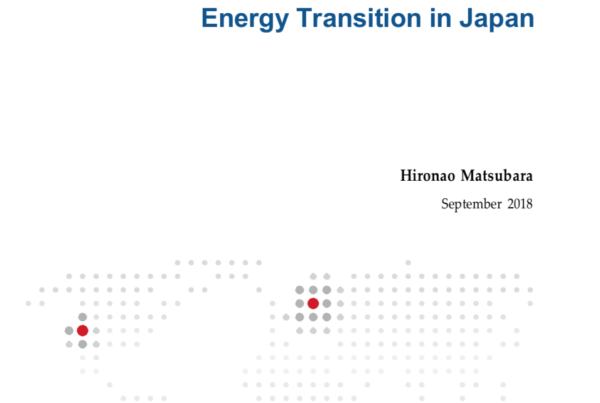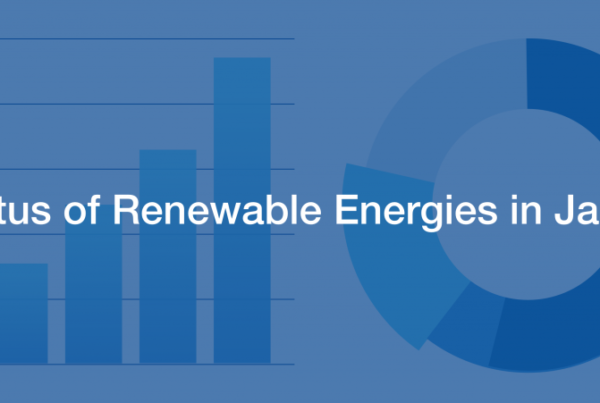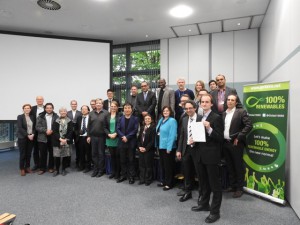Statement to IPCC 5th Assessment Report“Mitigation of Climate Change”
The IPCC (Intergovernmental Panel on Climate Change) has announced its Fifth Assessment Reports(AR5) consist of the reports by three working groups. The report of the working group 1 was released in September last year as “The Physical Science Basis” [1]. The report of working group 2 was released in March 2014 as “Impacts, adaptation and vulnerability」[2]. Finally, the report of working group 3 was released as “Mitigation of Climate Change” in April[3]. These reports were announced until April 13thand show the scientific evidence of climate change is clear, and in addition the cause of climate change is clearly due to anthropogenic greenhouse gas(GHG) emissions. What is also clear is the need to adapt to the vulnerabilities that climate change has produced. In response to the report of “The Mitigation of Climate Change”, the Institute for Sustainable Energy Policies (ISEP) would like to make the following statements.
1. Acknowledgement of the crisis
The IPCC report shows a sense of crisis to the threat of climate change, and clearly shows that a response is urgent. Local governments and the Japanese government, based on these reports, should not only clarify their own goals on global warming, but should also fundamentally review their policies
2. From low-carbon energy to sustainable energy
To reduce greenhouse gas emissions that are causing climate change it is not logical to delay in fundamentally supporting energy supply systems. However, only sustainable sources of energy are democratic and encourage community self-reliance. Renewable energy has spread explosively in recent years. Unsustainable undemocratic nuclear power and the coal-fired CCS, so called ”Low carbon energy” should not be aligned on the same level as Sustainable energy.
3. The scenario detracts from reality
Nuclear power emissions pose a serious risks of severe accidents, nuclear waste and nuclear proliferation, which was made clear by the Fukushima nuclear accident. Carbon dioxide capture and storage (CCS) still has enormous difficulties. The investment risk and the undemocratic process as means the reported scenario will never be realized in practice, and will never happen.
4. 100% renewable energy scenario
According the The Institute for Sustainable Energy Policies(ISEP), efforts towards 100% sustainable energy are supported in many regions in Japan. Also there is an international push to expand sustainable energy ”The global campaign on 100% renewable energy”[4]of which we are a partner and are actively participating. Fukushima and Nagano prefectures are already targeting 100% natural energy at a provincial level. The commitment to renewable energy and “Community Power” is spreading to many areas around the country.
In the “The Mitigation of Climate Change” report, policies to limit and reduce greenhouse gas emissions that are causing climate change have been evaluated, as well as economic analysis and evaluation of emission scenarios. 78% of the greenhouse gasses that have been emitted in the last 40 years have originated from fossil fuels. The increase in the usage of coal has been driven by population growth and economic growth. It has been pointed out in the baseline scenario with no mitigation measures, that there is a possibility that the global average surface air temperature in 2100 will rise 8 degrees compared to the Pre-Industrial levels
In the scenario that has been envisaged, greenhouse gas concentrations in the atmosphere in 2100 will be equivalent to about 450ppm of CO2. If the mitigation efforts are successful, temperatures could be suppressed to less than 2 degree Celsius above pre-industrial levels. In order to achieve this mitigation scenario, thorough change on a large scale is necessary both of land use and potential energy systems. There must be a 40-70% reduction in 2050 greenhouse gas emissions in the world compared with 2010. It is also necessary to be at 0(Zero) emissions or even negative by the year 2100.
It is important that fundamental measures be taken towards increasing the supply ratio of renewable energy and so called low carbon energy by 3 or 4 times compared to the 2010 ratio by 2050. Nuclear powers share of the market has been decreasing since 1993 for several reasons including the Fukushima Nuclear accident and problems with nuclear spent fuel. Thermal power generation from fossil fuels supply and drilling involve greenhouse gas leakage as does using natural gas and these energies should be regarded as an important “bridge”. In the meantime there are many concerns about the economics and safety of carbon dioxide capture and storage (CCS)
References
- [1] IPCC Fifth Assessment Report “Climate Change 2013: The Physical Science Basis”
- [2] IPCC Fifth Assessment Report “Climate Change 2014:Impacts, Adaptation and Vulnerability“
- [3] IPCC Fifth Assessment Report “Climate Change 2014: Mitigation of Climate Change”
- [4] Global 100% Renewable Energy Campaign –
go100re.net





